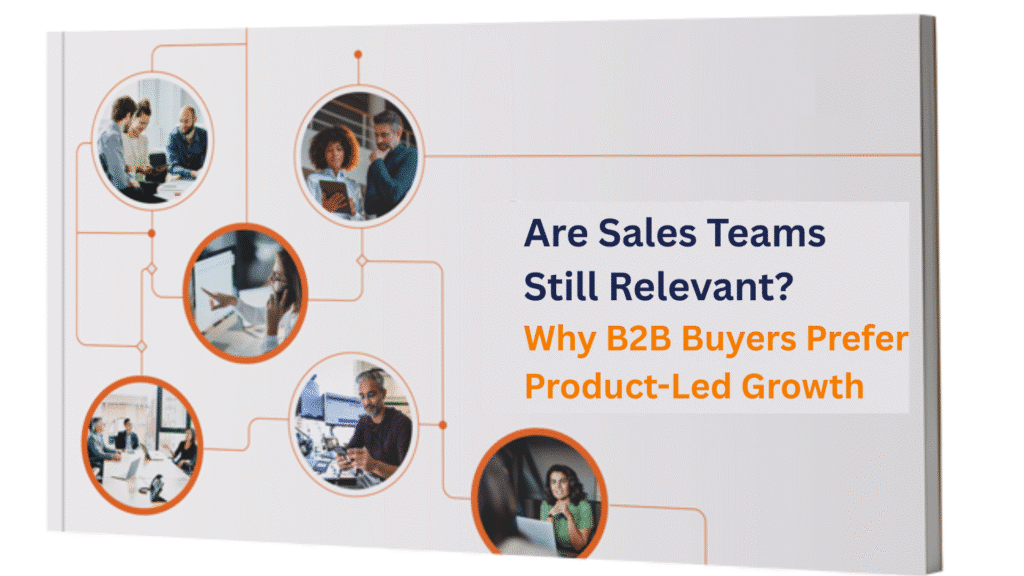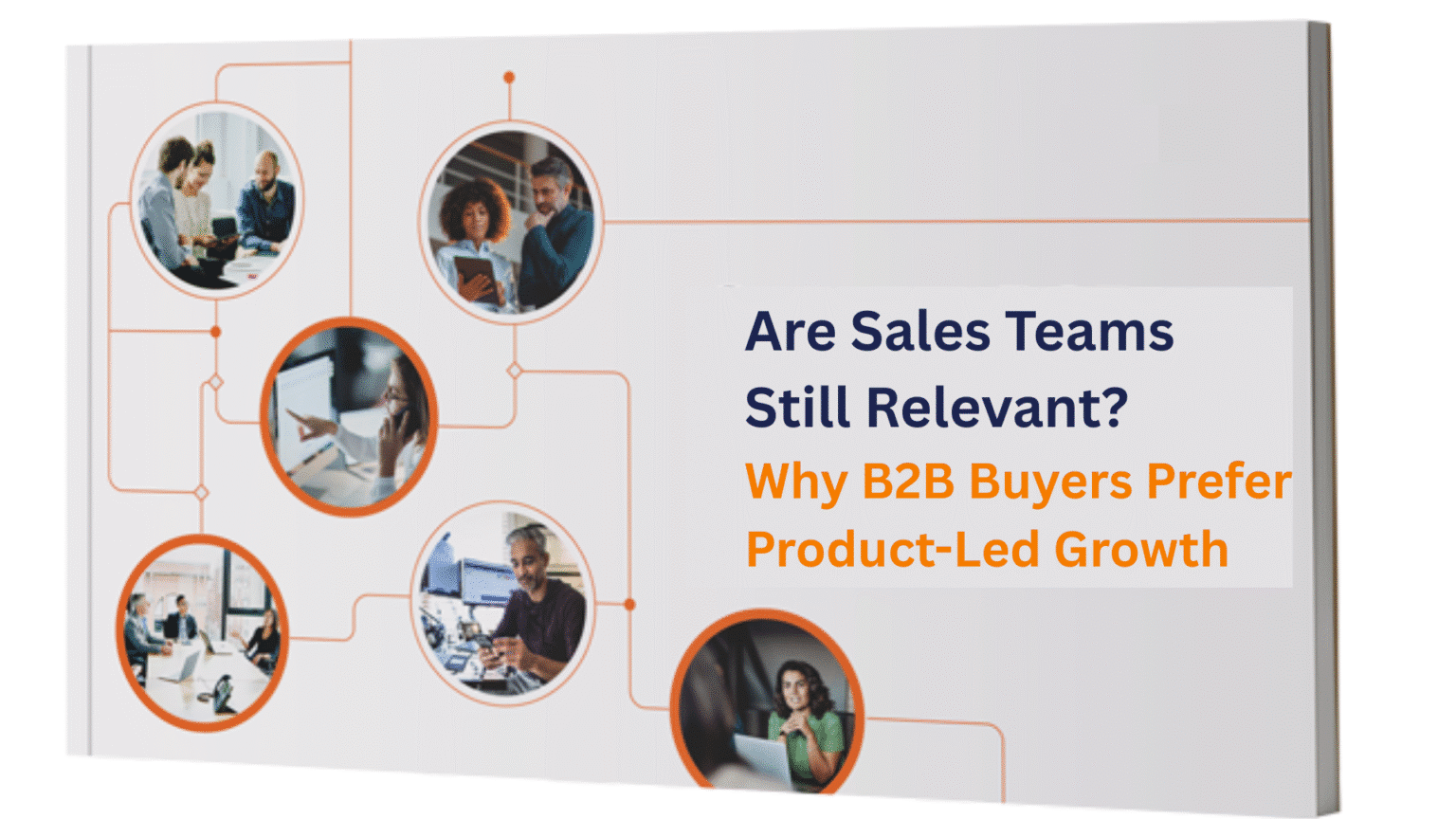
In the traditional B2B model, the sales team was the gatekeeper — the first point of contact, the source of product knowledge, and the driver of every deal. But in today’s market, a shift is underway. Modern B2B buyers want to try before they talk. They expect to experience real value from a product before engaging with a sales rep. This shift has given rise to Product-Led Growth (PLG) — a go-to-market strategy where the product itself is the main driver of acquisition, conversion, and expansion. As more companies adopt PLG models, the role of sales teams is being questioned: Do we still need them? Or has the product taken their place?
The Rise of Product-Led Growth (PLG) in B2B –
Product-Led Growth isn’t a new trend — but it’s reached a tipping point in 2025. From startups to SaaS giants, companies are prioritizing PLG to lower acquisition costs, speed up onboarding, and scale faster. In a PLG model, the product markets itself: users sign up, use it, experience value, and upgrade — often without talking to anyone. Tools like Slack, Zoom, Notion, and Figma have proven that product adoption can precede and even replace traditional sales processes. As buyers become more independent, they want to test-drive tools, not sit through scripted demos.
- PLG reduces friction and time-to-value for buyers
- Freemium and free trial models build trust faster
- Companies save money by reducing top-heavy sales orgs
- Users convert based on value, not persuasion
Why B2B Buyers Avoid Traditional Sales Interactions –
Today’s B2B buyers are digital natives. They’ve been burned by high-pressure pitches, vague pricing, and generic demos. They want transparency, speed, and control — all of which are difficult to deliver in the traditional sales flow. According to a 2025 Gartner study, 43% of B2B buyers say they actively avoid engaging with sales during their buying journey. Instead, they prefer self-serve content, user communities, and access to live product environments. The new buyer is no longer willing to “schedule a call” just to see if a tool fits — they want to see for themselves.
- Buyers value independence and speed
- Long sales cycles feel outdated and inefficient
- Gatekeeping product access leads to drop-offs
- Decision-makers want real product usage data, not just promises
What This Means for Sales Teams: Evolve or Fade –
The rise of PLG doesn’t mean sales is dead — it means it’s evolving. Instead of focusing on outbound prospecting and cold outreach, modern sales teams must shift toward product-assisted selling. Reps are becoming more like product consultants: stepping in only when the user needs help expanding, upgrading, or solving complex problems. This requires a deeper understanding of the product, strong collaboration with customer success teams, and a mindset focused on enablement, not just closing. Sales is no longer the driver — but it’s still critical for high-value accounts and enterprise expansion.
- Sales is shifting toward consultative and strategic roles
- Reps need to understand product usage data and user intent
- Expansion, upselling, and onboarding support are new priorities
- Collaboration with product and CS is more important than ever
The Hybrid Future: PLG + Sales-Led = Revenue Powerhouse
The smartest companies aren’t choosing between PLG and sales — they’re combining both. This hybrid approach gives users a frictionless way to start with the product and also offers sales support when complexity or scale demands it. Think of it as “sales-assisted PLG.” Sales reps use product signals to identify high-potential users and step in strategically. Instead of pushing a sale, they guide the user’s journey based on what they’ve already experienced inside the product. This makes the conversation more relevant, personal, and effective — leading to faster deals and higher customer satisfaction.
- Hybrid models blend low-touch and high-touch experiences
- Sales reps are more data-informed than ever
- Users don’t feel pressured — they feel supported
Metrics That Matter in a PLG World –
In a Product-Led environment, traditional sales KPIs like call volume and emails sent don’t tell the full story. Instead, the focus shifts to metrics like product-qualified leads (PQLs), user activation rates, and expansion revenue. Sales teams must become fluent in product analytics, user behavior, and conversion data. The new sales playbook is written in product usage dashboards, not just CRM notes. Success in PLG models means aligning sales incentives with product outcomes — not just contracts signed.
- Focus shifts from MQLs to PQLs (Product-Qualified Leads)
- Sales needs visibility into user behavior and feature adoption
- Revenue is increasingly driven by land-and-expand strategies
- KPIs must reflect value delivered, not just activity logged
Conclusion –
Sales teams are not becoming irrelevant — they’re becoming redefined. In a Product-Led Growth world, the role of the salesperson isn’t to open the door — it’s to guide the user through it. The days of cold calls and demo decks may be fading, but the need for strategic, consultative, and product-savvy salespeople is only growing. Companies that embrace PLG while empowering their sales teams to evolve will dominate in the years ahead. It’s not about removing sales — it’s about reimagining it.


